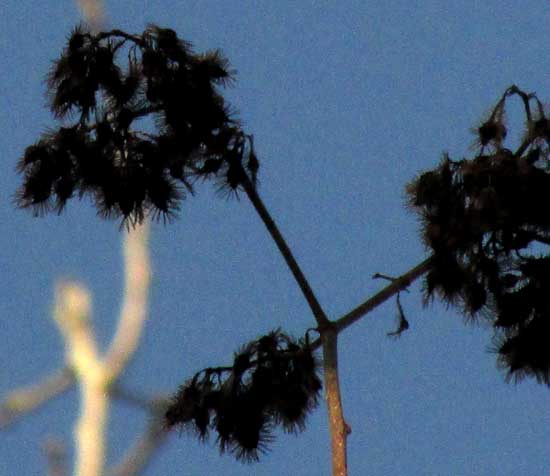Excerpts from Jim Conrad's
Naturalist Newsletter
from the November 21, 2010 Newsletter issued from Hacienda Chichen Resort beside Chichén Itzá Ruins, central Yucatán, MÉXICO; limestone bedrock, elevation ~39m (~128ft), ~N20.676°, ~W88.569°
HELIOCARPUS'S CURIOUS FLOWERS
Another tree not likely found in weedy areas is shown below:
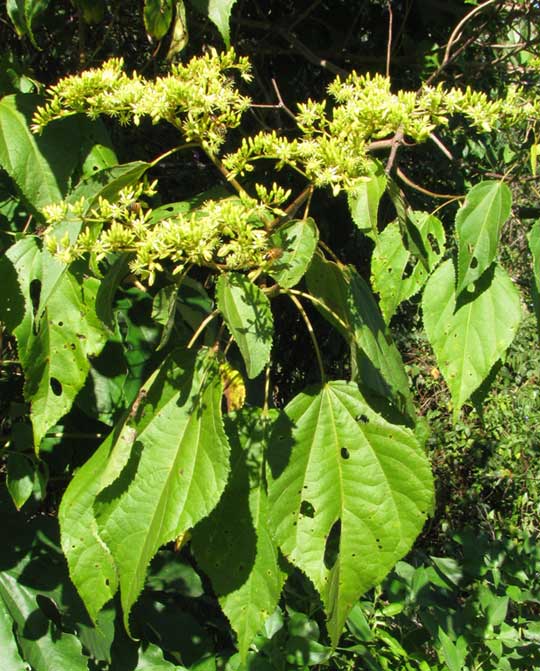
That's HELIOCARPUS DONNELLSMITHII, traditionally placed in the Basswood Family, the Tiliaceae, but with genetic sequencing now assigned to the big Hibiscus Family. You can see one of its tiny flowers below:

Often we've pointed out here that a feature distinguishing the Hibiscus Family, the Malvaceae, is that stamens in flowers of the family have their filaments joined into cylinders surrounding the ovarys' slender styles. But you can see here that the filaments don't do that, so, what's the deal?
The deal is that as the Hibiscus Family traditionally was conceived, those cylinder-forming filaments did indeed constitute a fine field mark for the family. The Hibiscus Family was thought of as a good example of a well defined family. However, now that genetic sequencing reveals the true relationships of things, it's clear that some genera within the family don't have "staminal columns." And Heliocarpus is one of them. More and more it's becoming clear that "plant families" are artificial, not-very-exact pigeon-holes existing only in human minds, and not something really existing in Nature.
The species bears conspicuous glands on its leaves, as shown below:
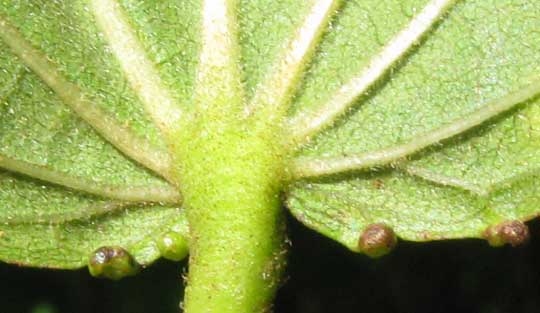
That's the underside of Heliocarpus's hairy leaf, where it attaches to the petiole. The glands are the brownish, shiny things along the blade margins. They're appear only near the petiolse. The typical function of such glands is to attract ants, which discourage herbivores from feeding on the leaves.
from the December 25, 2011 Newsletter issued from Hacienda Chichen Resort beside Chichén Itzá Ruins; limestone bedrock; elevation ~39m (~128ft), N20.675°, W88.569°; central Yucatán state, MÉXICO
HELIOCARPUS/ "SUN-FRUIT"
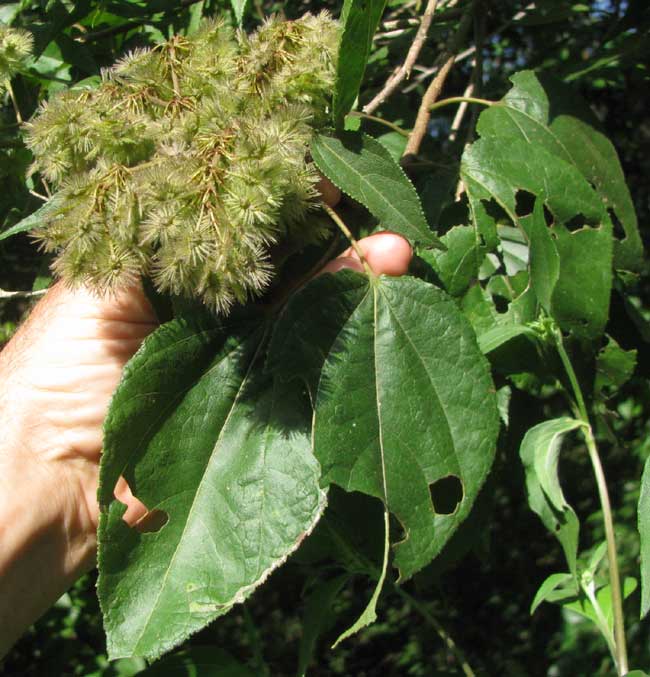
On the road south of Pisté to Yaxuná a 15-ft-tall tree (5m) tree turned up bearing hand-size masses of dense, exceedingly fuzzy, yellow-green fruits, as shown above. I broke off a fruit, which was somewhat stiff and woody, held it before me, and beheld what's shown below:
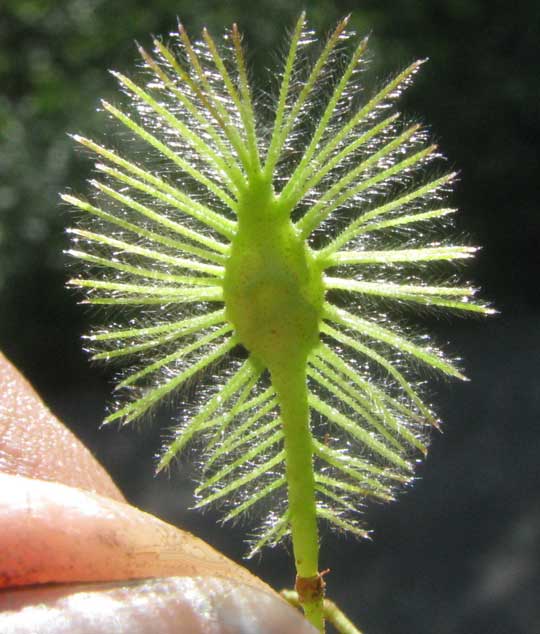
Though I'd never seen this before, instantly I had a good idea what it was, for the manner in which the hairs surrounding the fruit so vividly glowed in the sunlight almost shouted the tree's name. For, I had an idea which family it belonged to, and I knew of a genus name in that family perfectly describing the sun-gilt fruit in the picture: Helio for sun, carpus for fruit.
And that's what the tree turned out to be. It's a Heliocarpus, HELIOCARPUS DONNELLSMITHII, a member of the big Hibiscus Family, the Malvaceae. In the old days the genus resided in the Basswood or Linden Family, the Tiliaceae, basswoods being well known trees to northern tree-lovers. And, if you think about it, our Helipcarpus's leaf shape, the finely serrate leaf margins, and the blade's palmate veins are much like a northern Basswood's. The Basswood Family now has been sunk into the Hibiscus Family. I can't find an English name for Helipcarpus DONNELLSMITHII so here we'll just take a cue from its Latin and call it Sun-Fruit.
Ecologically the species is known as a forest pioneer, a plant that appears after a field has been abandoned to weeds awhile and woody trees are beginning to invade. Eventually the process leads to the return of a forest, if nothing interrupts the process. Typically pioneer species are fairly common, weedy ones, but this is my first introduction to Heliocarpus donnellsmithii. Pioneer forest species normally require lots of sunlight, and our Heliocarpus was found at a sunny wood's edge.
I read that one use the tree is known for is that its inner bark can be stripped from a trunk and used as string.
The tree is found from southern Mexico to Costa Rica.
from the March 18, 2018 Newsletter issued from Rancho Regenesis near Ek Balam ruins in Yucatán, MÉXICO
HELIOCARPUS TREES" FRUIT-LADEN BRANCHES
Now as the dry season begins bearing down with its heat and dryness, Heliocarpus trees have dropped their leaves, to save water. However, their naked branches still call attention to themselves with conspicuous, messy-seeming masses of brown fruits. With a half Moon shining in the background, below you can see a small part of a large forest tree:

Closer up, the individual fruits' distinctive shapes and soft-prickly coverings are seen, shown below:
